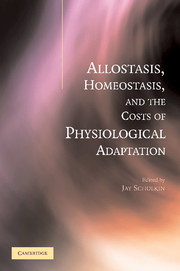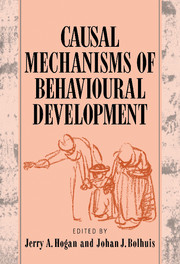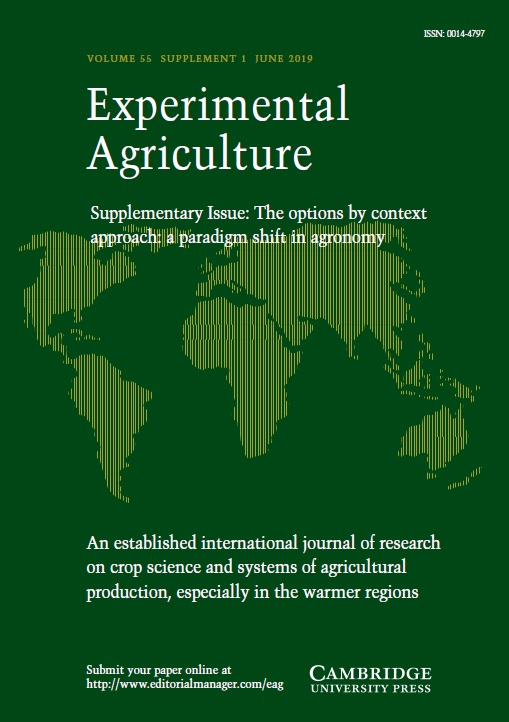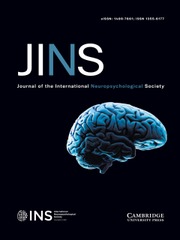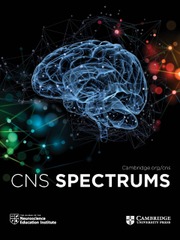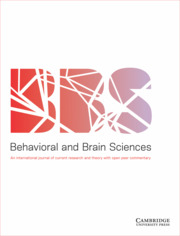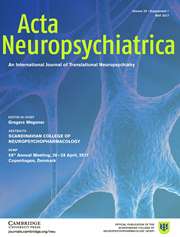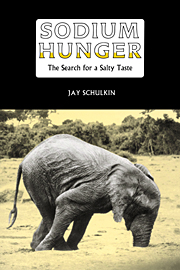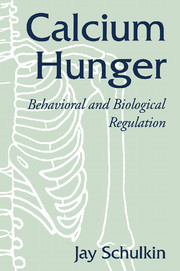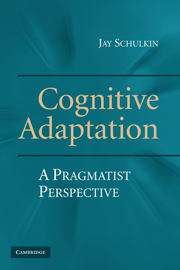Adaptation and Well-Being
Social Allostasis
- Author: Jay Schulkin, Georgetown University, Washington DC
- Date Published: April 2011
- availability: Available
- format: Hardback
- isbn: 9780521509923
Hardback
Other available formats:
eBook
Looking for an inspection copy?
Please email [email protected] to enquire about an inspection copy of this book
-
Recently, an interest in our understanding of well-being within the context of competition and cooperation has re-emerged within the biological and neural sciences. Given that we are social animals, our well-being is tightly linked to interactions with others. Pro-social behavior establishes and sustains human contact, contributing to well-being. Adaptation and Well-Being is about the evolution and biological importance of social contact. Social sensibility is an essential feature of our central nervous systems, and what have evolved are elaborate behavioral ways in which to sustain and maintain the physiological and endocrine systems that underlie behavioral adaptations. Writing for his fellow academics, and with chapters on evolutionary aspects, chemical messengers and social neuroendocrinology among others, Jay Schulkin explores this fascinating field of behavioral neuroscience.
Read more- Explores recent work in the important new field of social neuroscience, providing a biological perspective on social behavior
- Expands regulatory concepts from cognitive/physiological neuroscience to the context of social evolution
- Explains how social interactions are related to short- and longer-term adaptations
Reviews & endorsements
'Jay Schulkin is able to stand back from the mass of detail that sometimes overwhelms the rest of us, and offers us the enjoyment and excitement of a true synthesis. In this book he discusses the fundamental ability that is an absolute requirement for biological success: adaptation. The essence of his argument is that this involves not only physical adaptation to a harsh and competitive world, but social adaptation … Relating this to internal events in the body, particularly those that have evolved to deal with stress and its aftermath, makes this a synthesis that will intrigue and fascinate us all. Those who study social behaviour often seem separated by a chasm of incomprehension from those working on the neural and hormonal aspects of adaptation … Schulkin has attempted to build not one, but several bridges across this chasm. To walk across them is a pleasure.' Joe Herbert, University of Cambridge
See more reviews'Social species, by definition, form organizations that extend beyond the individual. These structures evolved hand in hand with behavioral, neural, hormonal, cellular, and genetic mechanisms to support them because the consequent social behaviors helped these organisms survive, reproduce, and care for offspring sufficiently long that they too reproduced, thereby ensuring their genetic legacy. In this important book, Jay Schulkin rethinks the regulation of the body's internal milieu from the perspective of the social milieu and illustrates how healthy social interactions and relationships have a critical role to play in adaptation, health and well-being.' John T. Cacioppo, University of Chicago
'Jay Schulkin has a wonderful gift - the ability to extract the seminal messages in the large corpus of work relating biological processes to psychological outcomes and arranging these kernels of fact into a coherent narrative with a direction and a unifying theme.' Jerome Kagan, Harvard University
Customer reviews
Not yet reviewed
Be the first to review
Review was not posted due to profanity
×Product details
- Date Published: April 2011
- format: Hardback
- isbn: 9780521509923
- length: 212 pages
- dimensions: 235 x 157 x 18 mm
- weight: 0.56kg
- contains: 51 b/w illus. 22 tables
- availability: Available
Table of Contents
Introduction
1. Evolutionary perspectives and hominoid expression
2. Social competence and cortical evolution
3. A window into the brain
4. Chemical messengers and the physiology of change and adaptation
5. Social neuroendocrinology
6. Cephalic adaptation, devolution and incentives
7. Neocortex, amygdala and prosocial behaviors
Conclusion: evolution, social allostasis and well-being
References
Index.-
General Resources
Find resources associated with this title
Type Name Unlocked * Format Size Showing of
This title is supported by one or more locked resources. Access to locked resources is granted exclusively by Cambridge University Press to lecturers whose faculty status has been verified. To gain access to locked resources, lecturers should sign in to or register for a Cambridge user account.
Please use locked resources responsibly and exercise your professional discretion when choosing how you share these materials with your students. Other lecturers may wish to use locked resources for assessment purposes and their usefulness is undermined when the source files (for example, solution manuals or test banks) are shared online or via social networks.
Supplementary resources are subject to copyright. Lecturers are permitted to view, print or download these resources for use in their teaching, but may not change them or use them for commercial gain.
If you are having problems accessing these resources please contact [email protected].
Sorry, this resource is locked
Please register or sign in to request access. If you are having problems accessing these resources please email [email protected]
Register Sign in» Proceed
You are now leaving the Cambridge University Press website. Your eBook purchase and download will be completed by our partner www.ebooks.com. Please see the permission section of the www.ebooks.com catalogue page for details of the print & copy limits on our eBooks.
Continue ×Are you sure you want to delete your account?
This cannot be undone.
Thank you for your feedback which will help us improve our service.
If you requested a response, we will make sure to get back to you shortly.
×

